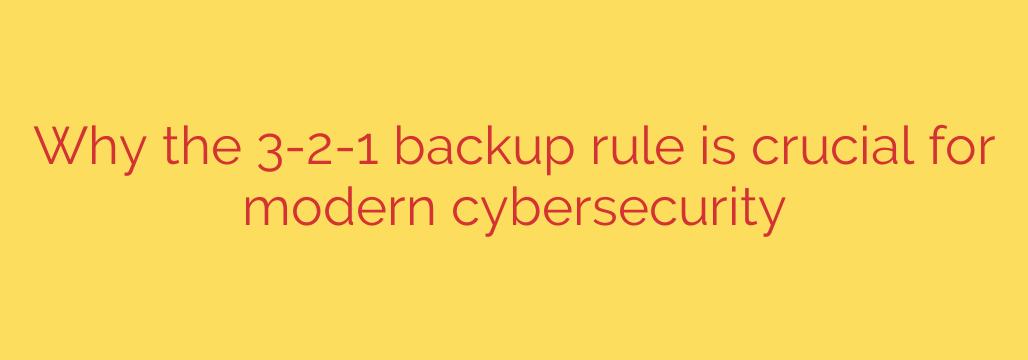
In today’s digital world, safeguarding vital information is paramount. Cyber threats like ransomware and hardware failures pose constant risks, making a robust backup strategy essential for both businesses and individuals. The 3-2-1 backup rule stands out as a foundational principle for achieving comprehensive data protection and ensuring rapid recovery in the face of disaster.
This widely recommended strategy is straightforward yet incredibly effective. It dictates that you should always have:
3 Copies of Your Data: This includes the primary working copy and at least two separate backups. Having multiple copies reduces the risk that a single point of failure, whether corruption or accidental deletion, will render all your data inaccessible.
2 Different Types of Storage Media: Store your backups on at least two distinct types of media. This could mean keeping one backup on an internal hard drive and another on an external drive, network-attached storage (NAS), or cloud storage. The goal is diversity; different media have different vulnerabilities. If one type fails or is compromised, the other remains available. Examples include internal drives, external HDDs/SSDs, USB drives, tape drives, optical media (CDs/DVDs), and cloud services.
1 Copy Stored Offsite: At least one of your backup copies must be kept in a separate physical location from the primary data and the other backups. This offsite copy is critical for protecting against site-specific disasters such as fire, flood, theft, or even a large-scale malware attack that could affect everything connected locally. Cloud backup services are a popular and convenient way to fulfill this requirement.
Adhering to the 3-2-1 rule significantly improves your ability to recover from various incidents. If your primary hard drive fails, you have local backups. If a ransomware attack encrypts your local systems and attached drives, you have the offsite copy. If your building is destroyed, the offsite copy ensures business continuity.
Implementing the 3-2-1 rule is not just about making backups; it’s about creating layers of redundancy and resilience. It provides peace of mind by ensuring that no single event can completely wipe out your valuable information. While the specific media and methods may evolve with technology, the core principle of multiple copies on different media, with at least one offsite, remains a timeless cornerstone of effective data protection and disaster recovery planning in the age of modern cybersecurity challenges.
Source: https://datacentrereview.com/2025/05/the-3-2-1-backup-rule-is-still-key-to-modern-cybersecurity/








